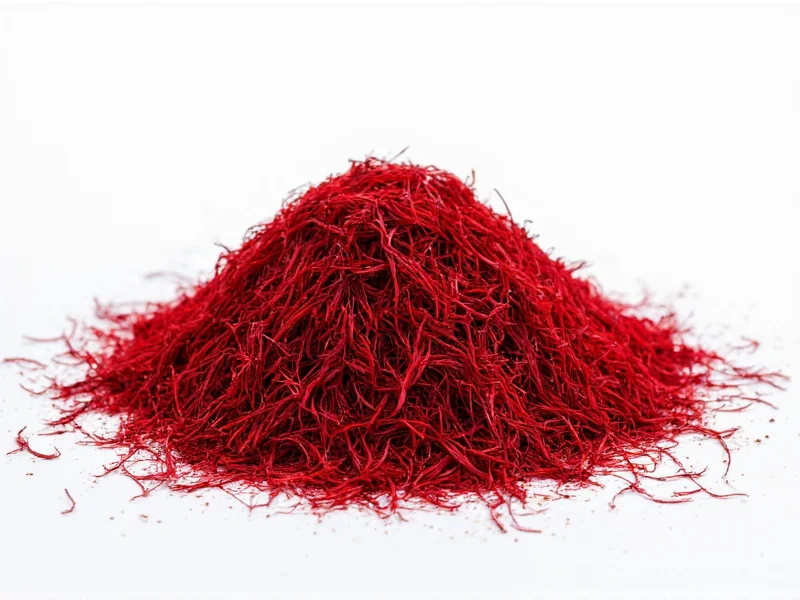As of 2024, high-quality saffron typically costs between $5,000 and $15,000 per pound, with premium ISO 3632 Category I saffron averaging $10,000-$14,000 per pound. However, saffron is rarely sold by the pound to consumers due to its extreme value—most retail purchases occur in gram or ounce quantities.
Saffron's extraordinary price tag makes it the world's most expensive spice by weight. Understanding how much is saffron per pound requires context about why this crimson spice commands such premium pricing. While the headline figure seems astronomical, the reality of saffron economics becomes clear when examining its labor-intensive production process and strict quality standards.
Why Saffron Is Priced Per Gram, Not Per Pound
When researching current saffron price per pound, consumers often encounter confusion because the spice industry measures saffron in much smaller units. This isn't arbitrary—it reflects saffron's exceptional value:
- It takes approximately 75,000–250,000 crocus flowers to produce just one pound of dried saffron
- Each flower yields only three delicate stigmas that must be hand-picked at dawn
- The entire harvesting window lasts merely 1–2 weeks annually
- Processing requires immediate drying to preserve volatile compounds
These factors explain why reputable vendors typically sell saffron in 0.5g, 1g, 5g, or 1oz packages rather than pound quantities. When bulk saffron pricing per pound is discussed, it usually refers to commercial wholesale transactions between producers and distributors.
Saffron Quality Grades and Their Price Impact
The ISO 3632 international standard classifies saffron into three quality categories based on crocin (color), picrocrocin (taste), and safranal (aroma) content. This grading system directly determines how much saffron costs per pound:
| Quality Grade | Color Strength (min) | Retail Price Per Gram | Estimated Price Per Pound |
|---|---|---|---|
| Category I (Super Negin) | 190 | $12.00–$20.00 | $7,680–$12,800 |
| Category II (Sargol) | 150 | $8.00–$14.00 | $5,120–$8,960 |
| Category III (Pushal) | 110 | $5.00–$9.00 | $3,200–$5,760 |
Note that these saffron price per pound calculations represent theoretical retail equivalents. Actual wholesale pricing for commercial buyers operates on different economics with volume discounts. The premium Category I saffron (often called Super Negin) commands the highest price of saffron per pound due to its superior coloring strength and purity.
Factors Influencing Current Saffron Market Prices
Several critical elements affect the real cost of saffron per pound in today's market:
Harvest Yield Variability
Drought conditions in major producing regions like Iran, Spain, and Kashmir significantly impact annual yields. The 2023 harvest saw reduced output due to water shortages, contributing to 15–20% price increases for pure saffron per pound compared to 2022.
Labor Costs
With harvesting requiring skilled manual labor at 3–5am, rising wages in producing countries directly affect how much a pound of saffron costs. Iran, producing 90% of global supply, has seen labor costs increase 8% annually over the past five years.
Purity Verification
Third-party lab testing for authenticity adds $200–$500 per kilogram to production costs. This explains why genuine saffron price per pound rarely falls below $5,000—products significantly cheaper likely contain fillers like safflower or turmeric.
Market Demand Shifts
Growing interest in saffron's potential health benefits has increased demand by 12% annually since 2020. This rising saffron market price per pound trend shows no signs of reversing as culinary and supplement industries expand.
Evaluating Saffron Value: Beyond the Price Tag
When assessing what saffron should cost per pound, consider these value indicators:
- Color release test: Genuine saffron slowly releases golden-yellow hue in warm water (adulterated versions discolor immediately)
- Thread integrity: High-quality strands remain intact when rubbed between fingers (powdered versions suggest dilution)
- Aroma profile: Premium saffron emits honey-like fragrance with subtle hay notes (musty smells indicate poor storage)
- Geographic certification: Look for PDO (Protected Designation of Origin) labels from Kashmir, La Mancha, or Morrocan regions
Understanding these quality markers helps determine whether a particular saffron price per pound represents fair value. Remember that extremely low prices almost always indicate compromised quality—the adage “you get what you pay for” applies emphatically to this precious spice.
Where to Source Quality Saffron
For consumers seeking authentic product, these channels typically offer the best balance of quality and value:
- Specialty spice retailers: Companies focusing exclusively on spices often provide lab-certified saffron with transparent sourcing
- Direct-from-farm platforms: Some Kashmiri and Spanish producers now sell through dedicated e-commerce sites, eliminating middlemen
- Certified co-ops: Organizations like the Saffron Growers Association of Kashmir offer traceable products at fair-trade prices
When evaluating current saffron market price per pound quotes, always verify whether prices include shipping, import duties, and purity certifications—hidden costs can add 25–40% to the apparent cost of saffron per pound.
Practical Buying Advice
For most home cooks, purchasing saffron by the pound makes little economic sense. Consider these practical alternatives:
- Buy 0.5g–1g samples to test quality before larger purchases
- Store saffron in airtight containers away from light to preserve potency for 2–3 years
- Grind threads with a pinch of sugar just before use to maximize flavor release
- Understand that 1g of premium saffron equals approximately 400–500 threads—enough for 20–30 dishes
While researching how much is real saffron per pound, remember that the true value lies in saffron's unparalleled flavor concentration. A single pound contains roughly 300,000–400,000 individual threads—sufficient to season 60,000–80,000 dishes when used properly. This perspective helps contextualize the actual saffron price per pound as an investment in exceptional culinary experiences rather than a simple commodity purchase.











 浙公网安备
33010002000092号
浙公网安备
33010002000092号 浙B2-20120091-4
浙B2-20120091-4